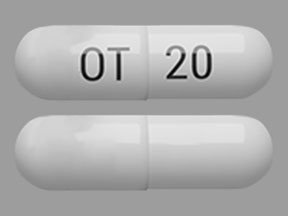Mycapssa Disease Interactions
There are 7 disease interactions with Mycapssa (octreotide).
- Renal dysfunction
- Gallbladder/biliary dysfunction
- Glucose intolerance
- Heart disease
- Hepatic impairment
- Thyroid dysfunction
- Vitamin B12 deficiency
Octreotide (applies to Mycapssa) renal dysfunction
Major Potential Hazard, High plausibility.
Octreotide is eliminated by the kidney. Approximately 30% of octreotide is excreted unchanged in the urine. The serum concentration of octreotide and the half-life is increased in patients with severe renal dysfunction. Therapy with octreotide should be administered cautiously and dosage modification considered in patients with severe renal impairment as the half-life of octreotide may be increased, necessitating adjustment of the dosage.
Octreotide (applies to Mycapssa) gallbladder/biliary dysfunction
Moderate Potential Hazard, High plausibility. Applicable conditions: Gallbladder Disease, Biliary Obstruction
Octreotide inhibits gallbladder contractility and may alter bile composition. An average of 29% of patients develop new gallstones during octreotide therapy, and up to 20% of patients develop biliary sludge. Associated pancreatitis has been reported in rare cases. Gallbladder hypercontractility, sometimes resulting in biliary colic, has been reported upon withdrawal of octreotide.
Octreotide (applies to Mycapssa) glucose intolerance
Moderate Potential Hazard, High plausibility. Applicable conditions: Diabetes Mellitus
The incidence of hypoglycemia may increase during octreotide therapy due to inhibition of glucagon and growth hormone. Hyper- and hypoglycemia have been associated with the use of octreotide in nondiabetic patients with acromegaly. Clinical monitoring of blood glucose is recommended in patients with diabetes or insulinoma.
Octreotide (applies to Mycapssa) heart disease
Moderate Potential Hazard, Moderate plausibility.
Bradycardia, arrhythmias and conduction abnormalities, including QT prolongation have been reported with the use of octreotide. Patients taking other drugs that have bradycardic effects may need dose adjustments. Caution is recommended in patients with cardiac function abnormalities.
Octreotide (applies to Mycapssa) hepatic impairment
Moderate Potential Hazard, Moderate plausibility. Applicable conditions: Liver Disease
The half-life of octreotide may be increased in patients with liver cirrhosis, necessitating adjustment of dosage. This dose should be up titrated based on clinical response and speed of response as deemed necessary by the physician.
Octreotide (applies to Mycapssa) thyroid dysfunction
Moderate Potential Hazard, Low plausibility. Applicable conditions: Hyperthyroidism, Hypothyroidism
Rarely, hypothyroidism requiring thyroid hormone replacement may occur during chronic therapy. More commonly, a statistically significant, but usually clinically insignificant, increase in TSH may be observed, possibly caused by slight inhibition of peripheral deiodination of thyroxin. Therapy with octreotide should be administered cautiously to patients with uncontrolled thyroid disorders. Clinical monitoring of thyroid function is recommended.
Octreotide (applies to Mycapssa) vitamin B12 deficiency
Moderate Potential Hazard, Moderate plausibility. Applicable conditions: Folic Acid/Cyanocobalamin Deficiency
Decreased serum concentrations of vitamin B12 have occurred during chronic administration of octreotide. Therapy with octreotide should be administered cautiously to patients with uncontrolled vitamin B12 deficiency.
Switch to professional interaction data
Mycapssa drug interactions
There are 167 drug interactions with Mycapssa (octreotide).
Mycapssa alcohol/food interactions
There is 1 alcohol/food interaction with Mycapssa (octreotide).
More about Mycapssa (octreotide)
- Mycapssa consumer information
- Check interactions
- Compare alternatives
- Pricing & coupons
- Drug images
- Latest FDA alerts (1)
- Side effects
- Dosage information
- During pregnancy
- FDA approval history
- Drug class: somatostatin and somatostatin analogs
- Breastfeeding
- En español
Related treatment guides
Drug Interaction Classification
| Highly clinically significant. Avoid combinations; the risk of the interaction outweighs the benefit. | |
| Moderately clinically significant. Usually avoid combinations; use it only under special circumstances. | |
| Minimally clinically significant. Minimize risk; assess risk and consider an alternative drug, take steps to circumvent the interaction risk and/or institute a monitoring plan. | |
| No interaction information available. |
See also:
Further information
Always consult your healthcare provider to ensure the information displayed on this page applies to your personal circumstances.


